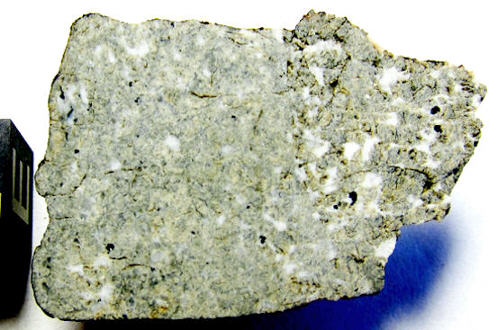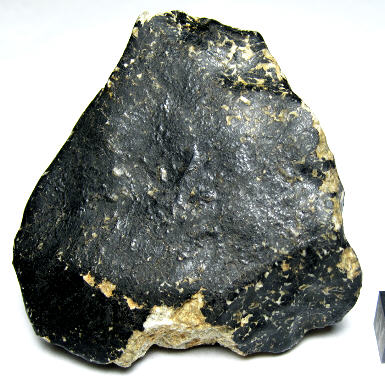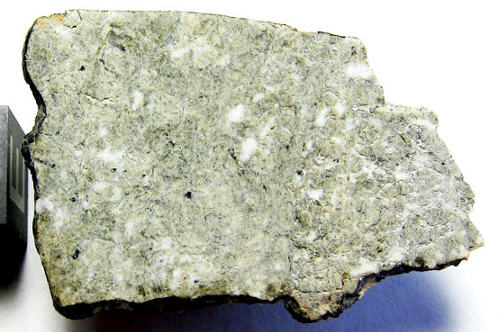NWA 6928
DiogeniteDiogenites belong to the evolved achondrite HED group that also includes howardites and eucrites. They are named after the Greek philosopher Diogenes of Apollonia, of the 5th century BCE, who was the first to suggest that meteorites come from outer space (a realization forgotten for over 2,000 years). They are Click on Term to Read More
NoriteIgneous rock composed of 90% plagioclase, 95% orthopyroxene (low-Ca pyroxene) and less than 10% olivine. Norite is most commonly found in the lunar (highlands) meteorites but has also been found in about a dozen diogenites, a few shergottites, and a very small number of other achondrite types. Gabbro is very Click on Term to Read More
Purchased May 2011
no coordinates recorded A single stone weighing 223 g was purchased by G. Fujihara from a Moroccan dealer. A sample was submitted for analysis and classification to the University of Washington at Seattle (A. Irving). While NWA 6928 was initially considered to be an unusual basaltic eucriteMost common type of achondrite meteorite and a member of the HED group. Eucrites are basalts composed primarily of pigeonite and anorthite (An60-98). Eucrites have been placed into three subgroups based on mineralogical and chemical differences. • Non-cumulate eucrites represent the upper crust that solidified on a magma ocean after Click on Term to Read More, chemical analyses revealed that it was a rare noritic diogeniteDiogenites belong to the evolved achondrite HED group that also includes howardites and eucrites. They are named after the Greek philosopher Diogenes of Apollonia, of the 5th century BCE, who was the first to suggest that meteorites come from outer space (a realization forgotten for over 2,000 years). They are Click on Term to Read More consisting of 80 vol% orthopyroxeneOrthorhombic, low-Ca pyroxene common in chondrites. Its compositional range runs from all Mg-rich enstatite, MgSiO3 to Fe-rich ferrosilite, FeSiO3. These end-members form an almost complete solid solution where Mg2+ substitutes for Fe2+ up to about 90 mol. % and Ca substitutes no more than ~5 mol. % (higher Ca2+ contents occur Click on Term to Read More (Fs33.4–34.1) and 19 vol% interstitialTerm applied to ions or atoms occupying sites between lattice points. Click on Term to Read More anorthitic plagioclaseAlso referred to as the plagioclase feldspar series. Plagioclase is a common rock-forming series of feldspar minerals containing a continuous solid solution of calcium and sodium: (Na1-x,Cax)(Alx+1,Si1-x)Si2O8 where x = 0 to 1. The Ca-rich end-member is called anorthite (pure anorthite has formula: CaAl2Si2O8) and the Na-rich end-member is albite Click on Term to Read More, along with accessory (<5 vol%) Ti–Al-bearing chromiteBrownish-black oxide of chromium and iron (Cr-Fe oxide), Cr2FeO4, found in many meteorite groups. Click on Term to Read More, troiliteBrass colored non-magnetic mineral of iron sulfide, FeS, found in a variety of meteorites. Click on Term to Read More, and merrillite (Irving et al., 2014). New terminology has been proposed in a revision to the diogenite classification scheme utilizing an IUGS-based system (Beck and McSween, 2010; Wittke et al., 2011).


Photo courtesy of Big Kahuna Meteorites







